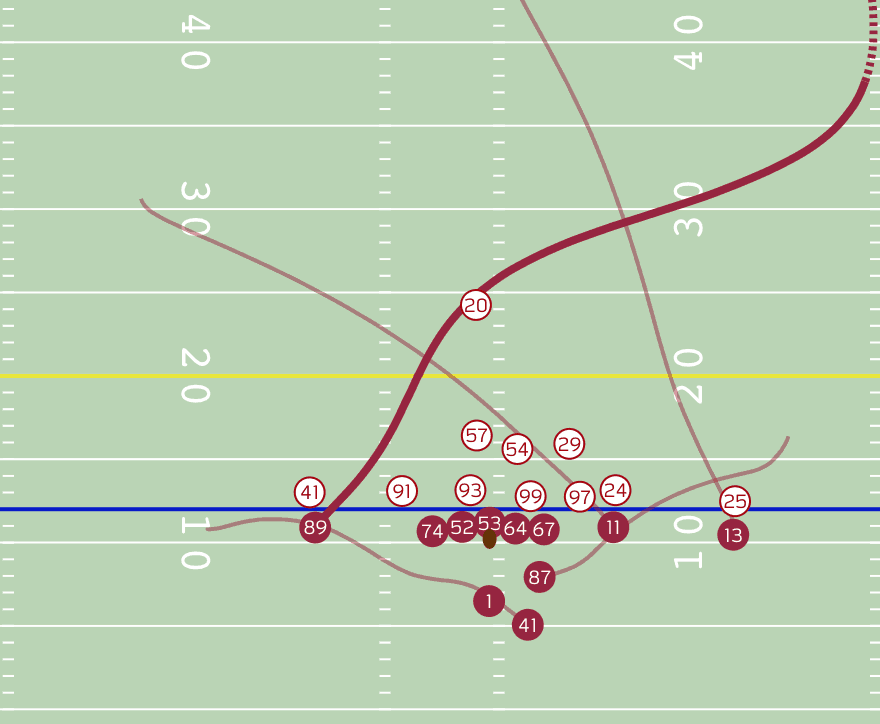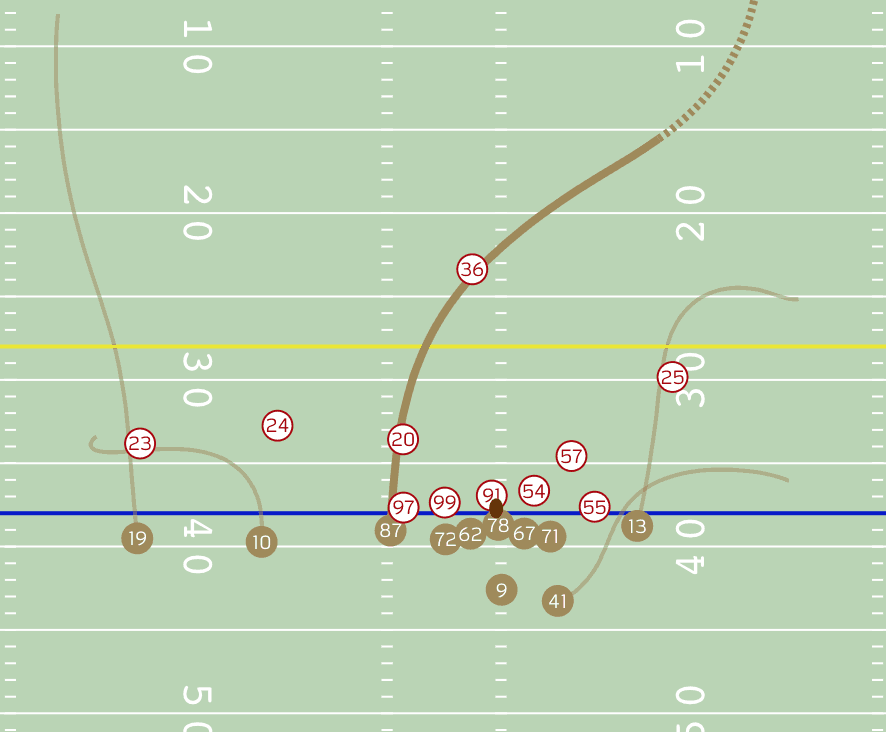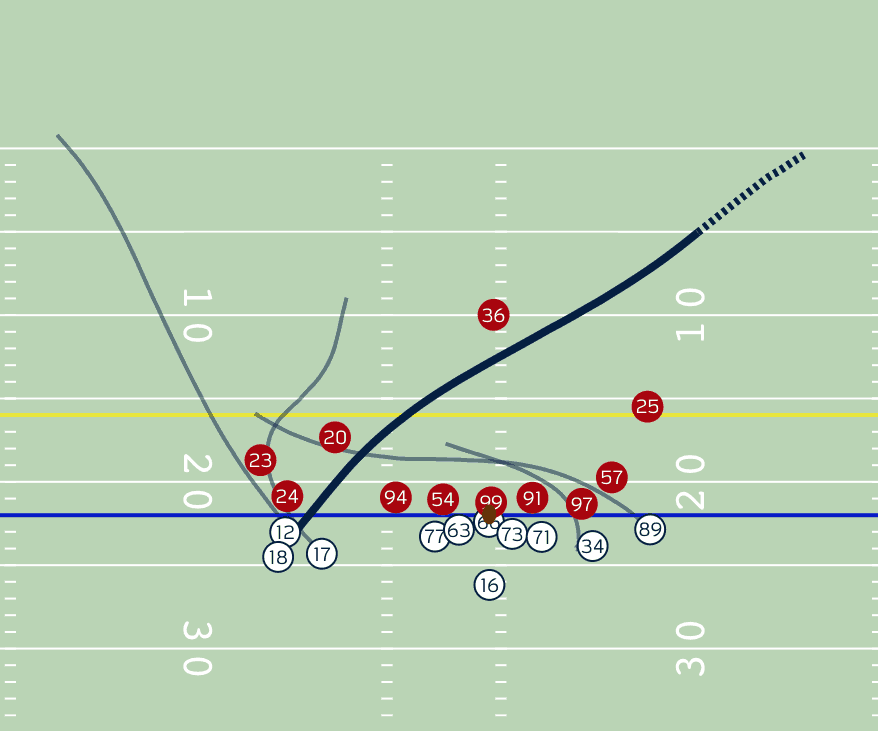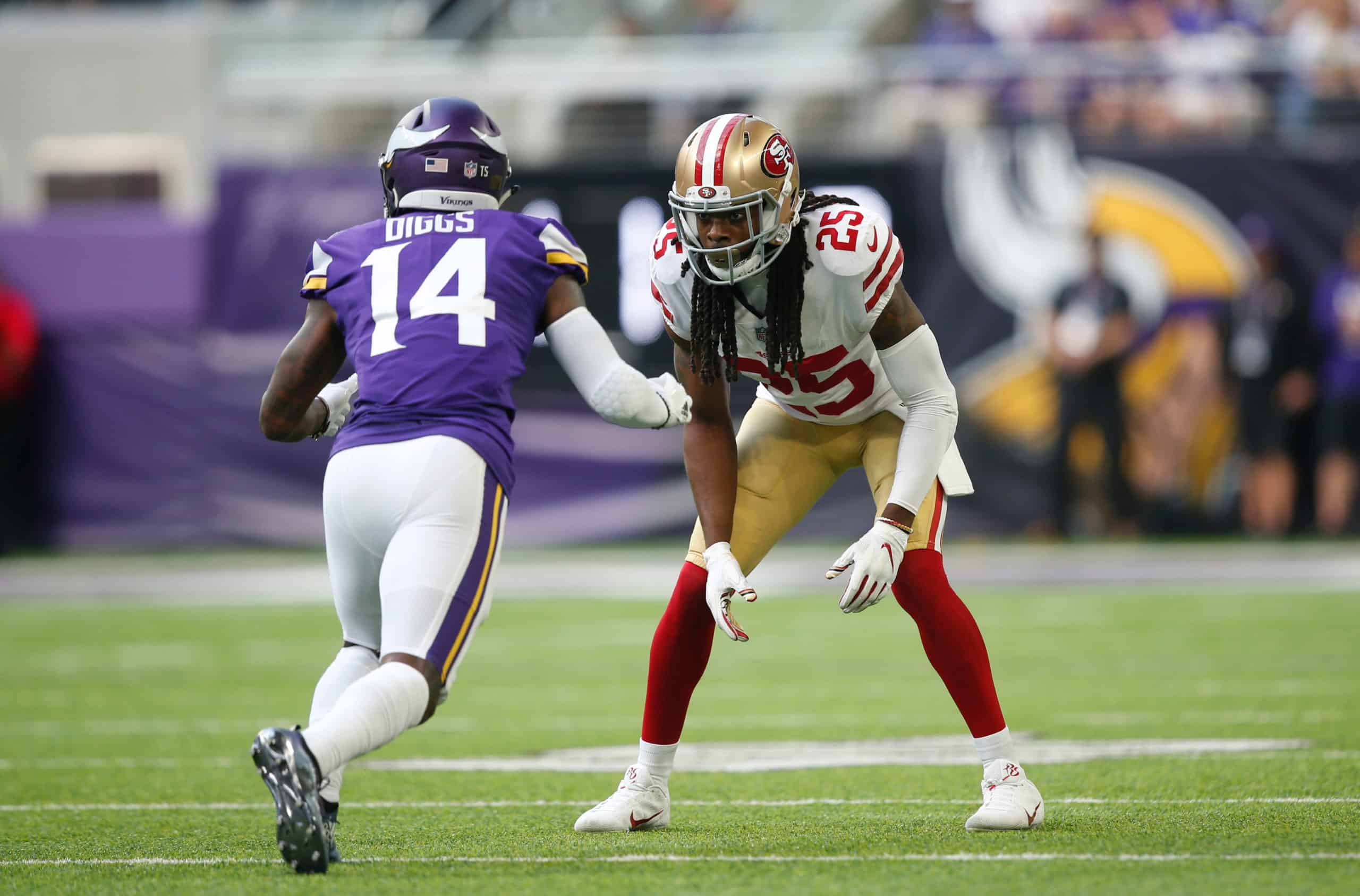Did the San Francisco 49ers get figured out? San Francisco finished the season as one of the best defenses in the league but the production, especially against the pass, showed a heavy split between the first half of the season and the second.
Over the first eight games, the 49ers allowed the second-lowest completion percentage and positive play rate (the percentage of plays that produce positive Expected Points Added, per Sports Info Solutions). During the last eight games of the regular season, both of those rates increased by about 10 percentage points and to league-average rates, at best. Though, during that dip, the 49ers were somehow able to decrease their yards per attempt allowed.
| Weeks | Comp% (rank) | YPA (rank) | Positive Play% (rank) |
|---|---|---|---|
| 1-9 | 55.95% (2) | 5.96 (2) | 35% (1) |
| 10-17 | 65.19% (27) | 5.87 (2) | 46% (15) |
This type of variance over a season shouldn’t be too surprising because we know defensive performance is significantly less stable than offensive. Still, that doesn’t make it any less concerning for the 49ers, who relied heavily on the defense throughout the season and will hope to do so in the postseason.
San Francisco might not have gotten figured out as a defense, but there were a few places opposing offenses did identify as potential weaknesses in the scheme. One of those things exploited in the second half of the season was the deep crossing route.
Per SIS charting, no team allowed more touchdowns on deep crossing routes than the 49ers this season, tied with the Detroit Lions with five. All five of those occurred in Week 9 or later.
While the way the opponents used these routes differed, the most effective routes shared some similarities. Opponents have used these routes against the 49ers when they’ve used a single-high safety. They also tend to cross from the left to the right, taking advantage of non-Richard Sherman defenders chasing receivers across the field.
In Week 9, the Arizona Cardinals had the biggest play, an 88-yard touchdown pass to Andy Isabella against Emmanuel Mosely in coverage.

Isabella started him stem vertically, which was enough to hold safety Jimmie Ward and once Isabella made his break, Mosely was too far behind and Isabella had a clear field in front of him. An incredible effort after the catch caused the touchdown.
In Week 14 against the New Orleans Saints, Jared Cook was the targeted player, again against a single-high look.

Cook’s vertical stem got him through the second level zone of Ward and Fred Warner. It also got the safety, Marcell Harris, to backpedal and shift toward the field-side hash, which created just enough separation for Cook on his break.
In Week 16 against the Los Angeles Rams, a trips bunch from the left side was used to create even more deception before the snap against another single-high look.

Cooper Kupp was the outside receiver in the bunch and unlike the two previous plays, started his cross immediately without selling a vertical route. Cornerback Ahkello Witherspoon had to get through some traffic to catch up with Kupp and by that time it was too late. A deep middle drop by Harris at safety also left no chance at help.
All of this potentially matters because the Minnesota Vikings, San Francisco’s opponent in the Divisional Round, were one of the league’s best teams at using deep crossers during the regular season. During the regular season, the Vikings were seventh in targets to a deep cross, third in completions, first in touchdowns, and first in EPA.
San Francisco also has to make a decision on how to attempt to stop the Vikings, especially since the run defense hasn’t been as good as the pass defense this season. If the 49ers worry too much about trying to stack the box and hold down Dalvin Cook, it could make them more susceptible to allowing one of these big plays in the passing game.
The Vikings have been successful on crossing routes by spreading the ball around. These aren’t just plays exclusive to Adam Thielen and Stefon Diggs. Olabisi Johnson led the team with five targets on this route during the regular season, per SIS. Thielen was second with four while Diggs and Kyle Rudolph both had three.
Minnesota has used the deep cross effectively all season and it started in Week 1. On a 1st and 10 against the Atlanta Falcons, the Vikings sent tight end Irv Smith in motion and got Diggs on the outside. The motion and the alignment of the cornerback showed zone coverage and with that, Diggs had a free release to the inside. Play-action sucked in the linebackers and Diggs was able to cross behind them for an easy gain of 31 yards.
Throughout the season, the Vikings also used these crossers on top of more deception with Kirk Cousins rolling to his left.
It worked with Thielen against the Lions in Week 7:
And it left a huge opening for Rudolph in Week 14 against the Denver Broncos.
Opponents have gotten the Niners in a very specific way on these routes but the Vikings have shown a versatile approach throughout the season. This is just a small part on one side of the ball in this matchup, but with other offenses exploiting this route for big plays, it certainly can be something Minnesota emphasizes. In a one-game playoff, it only takes one big play to turn a game and the Vikings have a chance to take on a very specific matchup in their favor.
















